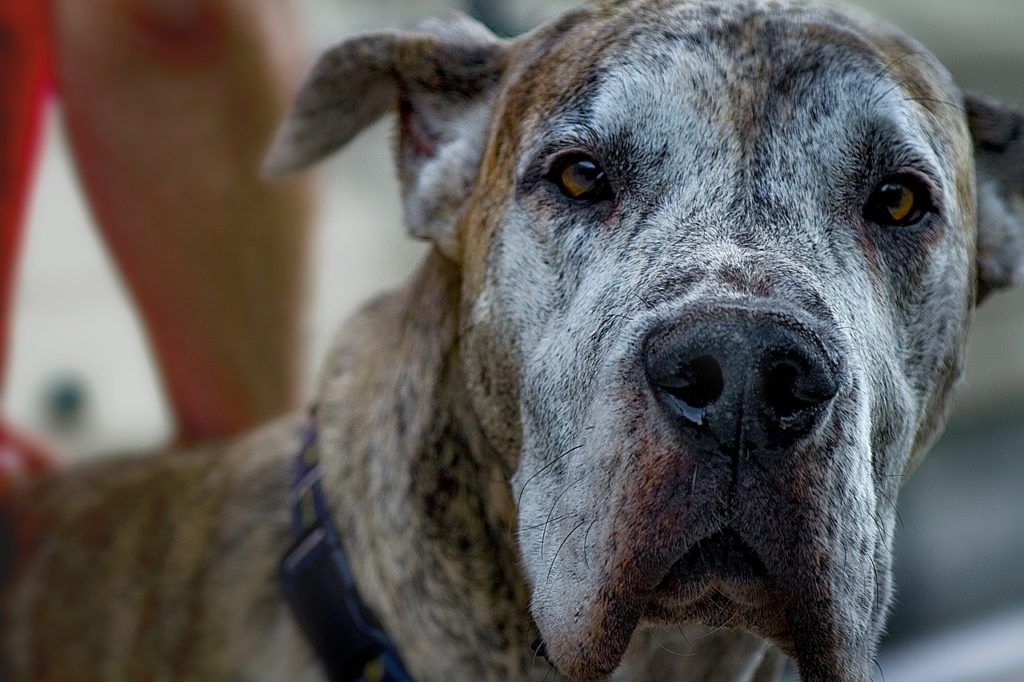Noble, loyal, and gentle, the Great Dane is one of the most-even tempered breeds in all of the dog world. Their commanding presence and muscular build would have many believe the Great Dane is an aggressive dog; however, once you get to know one, you will realize very quickly that is far from the case. In fact, their assertive appearance is quite the opposite from their loving and calm personalities.
If you are looking to bring home a Great Dane, chances are you will want to know everything about this breed beforehand. One critical factor that should be considered by all dog owners is a pet’s personality and temperament. The best thing you can do before bringing home your furry friend is spending some time researching everything you will need to know, including these very important factors.
All dogs showcase unique characteristics and personalities. However, some fit better with certain households compared to others. For example, a hyper puppy would not be best for an elderly owner, and a dog that needs lots of exercises should not be living in an apartment. Although every dog is different, having a general guideline can help you become the best owner that you can be. Before bringing home a dog, make sure your personality and activity level matches with your future dog breed.
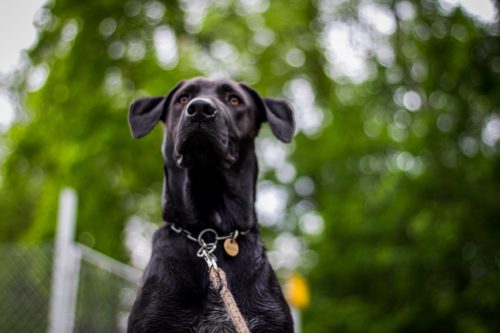
Below is an extensive guide to Great Dane personality traits as well as their temperament. After reading this article, you will have all the necessary knowledge and tools you need in order to care for and own a Great Dane.
Brief History of the Great Dane
Originating from Germany back in the 14th century, the Great Dane was bred to be a fierce hunter and companion for local hunters and farmers. Many believe these dogs were crossed with the English Mastiff and Irish Wolfhound which gave them their signature athleticism and distinct bodies.
The Great Dane’s claim to fame was their expertise in hunting wild boar and other large animals that were present throughout many European countries. They were even called boar hounds during their earliest years.
To capture these ferocious beasts, hunters needed a unique breed that was fearless, intelligent, and strong. During this time, the Great Dane was the best-suited dog who could handle such a difficult challenge.
By the 17th century, the Great Dane began to shift roles and became a favorite companion for nobility and other elitists. Their sheer size and graceful appearance caught the eyes of wealthy individuals who would take them home as guard dogs and family companions.
By the 1800’s, the Great Dane was being bred to be less aggressive and more friendly to adapt and become a household pet. This is also the period that this breed finally made their way to the United States. By 1887, the American Kennel Club recognized the Great Dane as an official breed.
Today, the Great Dane is no longer used for hunting boar or solely for the nobility. These dogs are appreciated by many for their lovable personalities and easy temperaments which make them an excellent pet for any household.
Great Dane Personality
Any Great Dane owner will tell you that these dogs are gentle giants. Most of the time, Great Danes are unaware of their true size and will even attempt to be a lap dog when given the chance.
What’s most important to the Great Dane is that they are constantly around their human companions and that they receive the attention they deserve. Unlike independent breeds, the Great Dane is happiest when they are surrounded by the ones they love and trust. If a Great Dane does not get this daily love and affection, there is a high possibility that they will develop behavioral issues later on down the road.
Aside from their lovable personalities, these pups have a reputation for being exceptionally courageous. This is most likely due to their long history as hunters back in Germany and England. Although they are rarely used as hunting dogs today, they still exhibit a bravery and boldness, unlike many other breeds.
On the other hand, Great Danes are also characterized by their playful dispositions. This is especially a plus for households with children. Their gentle, playful, and loving personalities pair very well with kids, as long as the child is big enough to handle such a large breed. Once a Great Dane has been added to a household, they will act as if they were just another member of the family.
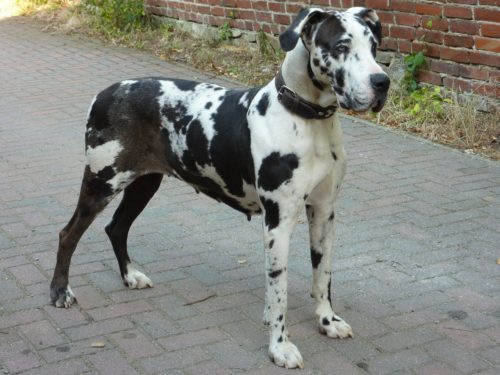
Great Dane Temperament
The Great Dane temperament is gentle yet active which is an excellent combination for busy households with children.
As previously stated, these pups thrive when they are with their human counterparts, and they should be apart of a family that can provide them with the level of attention they need to stay happy and healthy.
Generally speaking, Great Danes do not do well when they are left alone for long periods of time. Whenever you can, try to take your pup for a trip in the car or a walk to the mailbox. Great Danes appreciate even the smallest gestures when it comes to bonding with their owners.
At the end of the day, you can expect your Great Dane to greet you when you get home from work, keep you company while you’re cooking in the kitchen, and sleep right next to you on a nightly basis.
These easy-going dogs will do whatever they can to make their owners happy which can be seen through their loving demeanor and mellow temperament.
Factors That Influence Behavior
While every dog is different, and it’s impossible to say exactly how they will behave, there are several measures you can take as their owner to help your pup develop favorable personality traits later on in life. Some of these factors that create a well-behaved Great Dane include their training, socialization, diet, and genetics.
Training
The dog training you provide your Great Dane puppy can have the most influential impact on their overall personality and temperament. Professionals recommend starting the training process as young as possible. These dogs are known to be fairly intelligent, especially when learning simple commands. Since they love to please their owners, they tend to be very attentive during training practices and are highly capable of becoming a well-behaved pet later in life.
The best way to train your Great Dane is by having him participate in consistent and entertaining practices on a daily basis. Make sure to keep the practices short and fun, and follow these dog training tips so that your dog stays interested during the entire lesson. If you try to teach a Great Dane too much at once, they will most likely disregard the whole lesson and go on as they please. Just like with any breed, always show your Great Dane patience and encouragement while you are in the training process.
Although training a Great Dane should be easy, you can always enroll him in a puppy training course if you are having a difficult time. These classes help to reinforce good behavior through professional assistance. Aside from learning new tricks, dogs enrolled in puppy training courses will learn how to socialize with other canines as well.
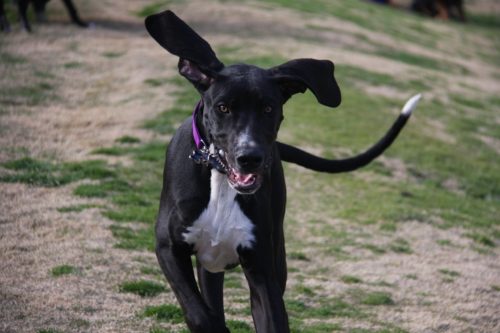
Socialization
The next important factor is their socialization. It is critical for dogs to be socialized while they are still a puppy. That way they learn how to properly interact with unfamiliar people, pets, and guests on a daily basis.
The most critical and influential period to socialize your dog with others is between 4 weeks to 4 months. Most dogs that have poor behavior is due to a lack of socialization while still in this period. They also may become shy or timid with anyone other than their owners if they have not been exposed.
Socializing your Great Dane from a young age will help him feel more comfortable in new settings and become more adaptable later on. Exposing him to different people, places, sounds, and experiences will make your Great Dane more outgoing and sociable throughout his entire life.
Diet
Although a dog’s diet may not be the first influential factor you think of when it comes to their personality, it can have a major impact on their overall happiness and activity level. Dogs that consume a nutrient-deficient diet are more likely to exhibit a volatile behavior, have decreased energy, and experience behavioral changes compared to a healthy one.
To prevent this from happening, feed your dog a wholesome and balanced diet that is filled with all natural ingredients. When choosing your dog’s food, make sure to look for products that are free of preservatives, fillers, and byproducts that can be harmful to his body. The best way to ensure that your dog is getting his necessary vitamins and nutrients on a daily basis is to consult with your veterinarian for recommendations. Providing your pet with a nutritious diet will keep him healthy and happy for years to come. Also, be sure to stay on top of your dog’s regular check-ups with his veterinarian.
Genetics
Last but certainly not least, is the Great Dane’s genetics. While this is a factor that cannot be controlled, it is a very significant component that determines the Great Dane’s personality and temperament. If you are concerned about your future dog’s character, the best thing to do is meet one or both of his parents. This will give you a good idea of how his personality and temperament will develop as he gets older.
It is always recommended to use a reputable breeder when bringing home a Great Dane. Make sure to stay away from puppy mills or other unknown sources that could be breeding dogs with health issues or unfavorable personality traits.
Great Dane Activity Requirements
Although they are calm and docile within a household setting, once a Great Dane gets outdoors, they will have the greatest time walking and running as they please. The Great Dane should be given a long walk each day, either two 30-minute walks or one 60-minute walk.
While they are at their puppy stage, do not take this breed for runs or partake in any strenuous exercises. This can damage their fusing joints and bones and cause life-long injuries. Most owners will wait 18 months to two years before taking their gentle giant for a run around the block. However, Great Dane puppies are still exceptionally active and will need about 60 to 90 minutes of physical activity on a daily basis.
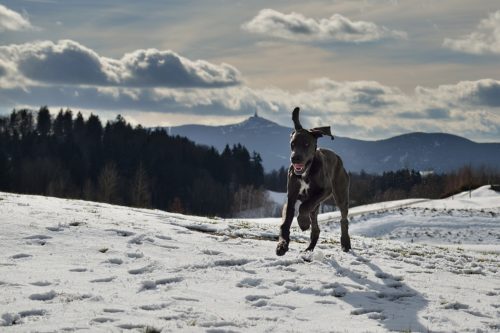
If you let your pup play in your backyard, make sure you have a fence that is at least 6 feet or higher. Even though they are not known to be jumpers, they are still impressively tall and might be capable of more than you think. WIth or without a big backyard, it is essential to take your Great Dane on daily walks to ensure his overall health and well-being.
As his owner, the best way you can ensure positive personality traits and an even temperament with your Great Dane is to socialize and train him from a young age.
It is also critical to feed your dog a healthy and nutritious diet from the very beginning. Once you follow all of these recommendations, you will be setting yourself up for having a well-mannered pet for years to come.
As you can see, the Great Dane is a very favorable breed in the large dog category. Between their majestic appearance and lovable personalities, it’s no wonder why so many people rave about the Great Dane breed.
Taking the proper steps in raising your Great Dane will ensure a positive relationship between you and your pet. As long as he receives the attention he needs and has been properly trained, you should have no issues with your Great Dane’s personality and temperament.

